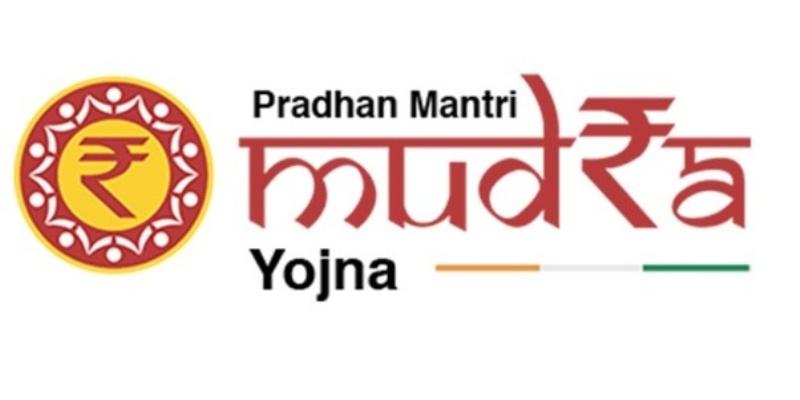Over seven years since launch, borrowers of Mudra loans – essentially micro and small enterprises – have paid their EMIs (equated monthly instalments) to banks. Non-performing assets of banks for Mudra loans – including those extended during the Covid-19 pandemic when small enterprises were the worst hit – are lower than the average NPAs of the sector as a whole, data obtained under the Right to Information Act reveals.
Buy Prime Test Series for all Banking, SSC, Insurance & other exam
Across The States:
Nearly ₹5,000 crore of loans or 16.32 per cent of the total bank assets in Maharashtra under the Pradhan Mantri MUDRA Yojana to help small businesses are unpaid as of June 2022, as per official data.
Parbhani district in the backward Marathwada region of Maharashtra has the highest non-performing assets (NPAs) at 60.54 per cent.
As per the data, ₹30,019 crore was taken as loan under the MUDRA scheme as of June 2022 by more than 52 lakh borrowers in Maharashtra. Out of this, ₹4,898 crore taken by 6.19 lakh borrowers has been classified as NPAs.
As far as Mudra loan is concerned, out of the total outstanding of Rs 6,204 crore as on March, Rs 695.50 crore was NPA, which is 11.24 per cent of the total outstanding loan in Hariyana. The NPA of the public sector banks was over 18.63 per cent, followed by Sarv Haryana Gramin Bank (10.84 per cent) and private sector banks (3.55 per cent).
Total Outstanding Loan Through Mudra Scheme:
MUDRA loan, which has completed 7 years of its operations, has extended a cumulative amount of Rs 18.83 lakh crore to Rs 34.93 crore loan accounts. The Reserve Bank of India has shown concern over the increase in non-performing assets (NPAs) under agriculture, MSME and Mudra loan.
What is worrisome is that except MSMEs, the NPAs of banks under agriculture and Mudra loan has further increased in the past year. According to the bankers, the unsustainable credit growth in the sector can risk the system.
In the last few years, public sector banks (PSBs), which have been the main channel for the distribution of MUDRA loans, have seen a spike in their bad loans in FY20 even as disbursements saw an appreciable increase, news reports have stated. NPAs, as a percentage of MUDRA loans disbursed by PSBs, increased to 4.80 per cent in FY20 from 3.75 per cent in FY19, as per government data.
The provisional data shared by the Finance Ministry showed that the share of bad loans in credit disbursed under PMMY by the public sector banks was highest at 4.74 per cent as compared to 1.92 per cent share for small finance banks, 1.14 per cent for private banks, 1.01 per cent for NBFC-microfinance institutions (MFIs), 0.67 per cent for MFIs, and 0.07 per cent for NBFCs, as of March 31, 2022.
It is to be noted that the bad loan volume under the MUDRA loans rose to Rs 34,090.34 crore in the financial year 2020-21, which was 30.7 per cent more than Rs 26,078.43 crore in FY20, and nearly doubled from Rs 17,712.63 crore in FY19.
About Pradhan Mantri Mudra Yojana (PMMY):
- MUDRA stands for Micro Units Development & Refinance Agency Ltd.
- It is a financial institution set up by the Government.
- Under the Pradhan Mantri Mudra Yojana (PMMY), banks provide collateral-free loans up to Rs 10 lakh.
- These loans are given to non-farm small/micro enterprises for income generating activities.
- Launched in 2015
- Aim: To provide funding support to micro-entrepreneurs, with the government providing annual loan sanction targets to banks.
- There are three categories:
- Shishu loan up to Rs 50,000
- for micro entrepreneurs like vendors and shopkeepers,
- Kishor loan of Rs 50,000-Rs 5 lakh
- for smaller enterprises like buying for light commercial vehicles, allied agriculture activities and equipments, and
- Tarun loan accounts of Rs 5-10 lakh
- for, say, food product units.
- Shishu loan up to Rs 50,000
About Non-Performing Assets(NPAs):
Non-Performing Assets (NPA) are loans and arrears lent by the banks or financial institutions whose principal and interests are delayed beyond 90 days. In simpler terms, any asset that ceases to provide returns to its investors for an extended period of time is referred to as a non-performing asset (NPA). According to the RBI data, nearly over 10% of all loans have become NPAs as of September 2021.
Classification of Non Performing Assets:
- Sub-standard: When the NPAs have aged <= 12 months.
- Doubtful: When the NPAs have aged > 12 months.
- Loss assets: When the bank or its auditors have identified the loss, but it has not been written off.
NPA Problem of India Banks:
- The NPA was on a declining trend from FY 2018 due to various initiatives by the Reserve Bank of India and the central government such as the Insolvency and Bankruptcy Code, Abolition of previous initiatives like 5:25 rule etc.
- Due to the effects of the coronavirus (COVID-19) epidemic and lockdown, the country was expected to see an increase in bad loans.
- The Reserve Bank of India projected three scenarios for the fiscal year 2022 until September 2021 based on the value for September 2020.
- Under the baseline scenario, the GNPA-ratio would reach 13.5 percent, setting a new high.
Find More News Related to Banking



 Indian Olympic Medal Winners List Till N...
Indian Olympic Medal Winners List Till N...
 Who is the Inventor of the Gramophone?
Who is the Inventor of the Gramophone?
 HS Dhaliwal Appointed New DGP Of Andaman...
HS Dhaliwal Appointed New DGP Of Andaman...
